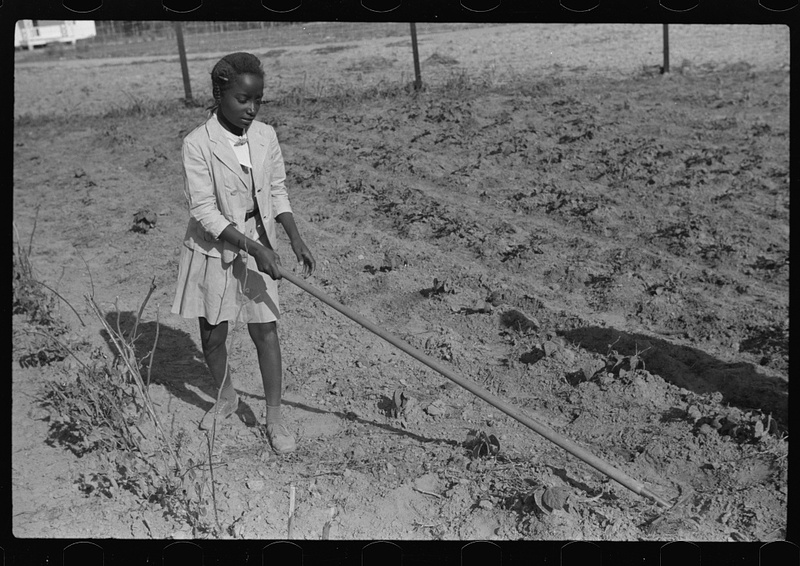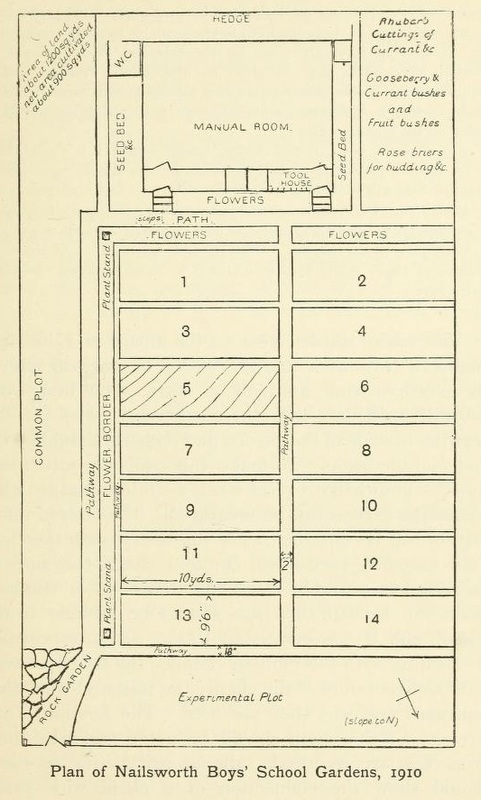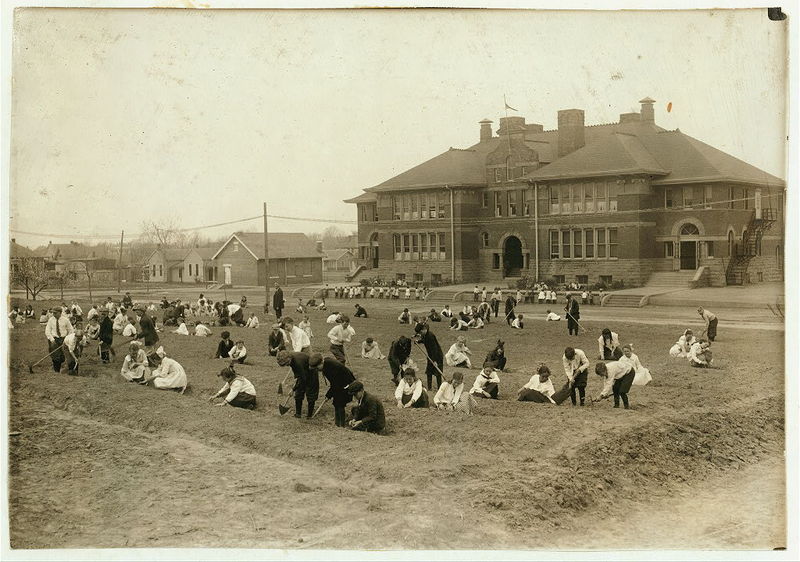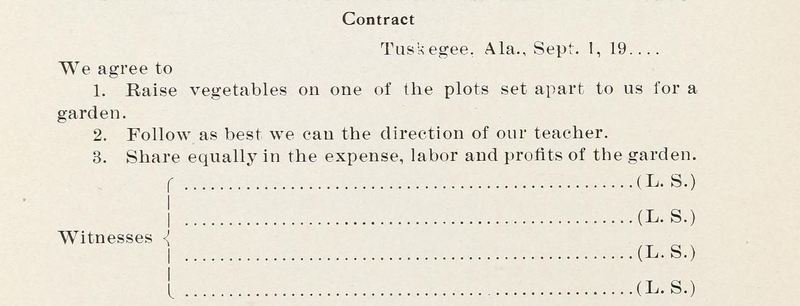Individual or Group Plots
Some practitioners felt that each school garden should be a product of the individual effort of a single child:
"The idea of ownership and the rights of ownership, which come from the possession of a garden, induce the pupil to exercise his ability to make his possession as good or better than that of his neighbor. The natural result of this is industry. Business experience is an important result of harvesting and accounting for the products which are grown. The right of ownership and a respect for property rights are more largely developed from the possession of individual gardens than in community gardens. The idea that "what's mine is my own " becomes very strongly developed, with the natural sequence that such possessions must be properly protected and all rights concerned respected. On the other hand, a party interest in a community garden does not so emphatically develop the idea of individual responsibility, and each one has a tendency to care less for the plants which another has shared in producing, with the result that responsibility is shirked, and there is lack of interest, with a consequent lack of industry. For this reason, in our work from the very inception the individual garden idea has been emphasized and strictly adhered to."
Corbett, L.C. (1922) The School Garden. U.S. Department of Agriculture. Farmers' Bulletin, Number 218, p. 5
G.W.S. Brewer illustrated a garden plan including 14 separate plots that could be used by either a single child or a team of 2 students:
In School Gardening for Little Children, Lucy R. Latter advocated the value of group work for small children:
"Here I would like to say that experience amply proves that outdoor gardening with little children should only be taken as group work — that is to say, with but a small number of children at a time. Except for such work as watering the beds, or removing any stones from the same, when more children may easily be employed, from eight to ten children are about as many as one teacher alone can keep really occupied at a time, for she has to superintend and direct so many different operations the while. One bed may require weeding, another may have to be raked over, whilst in the kitchen garden there may be some runnerbeans to string up, or some carrots to thin out, and numberless other things."
Latter, Lucy R. (1906). School Gardening for Little Children. London: Swan Sonnenschein & Company, Limited, pp. 15-16
George Washington Carver contended that school gardens should be managed as partnerships among students, created and managed through written contracts:
"It has been the experience of many teachers that it works well to have two, three or four children form a partnership, under written contract, who will be assigned by the teacher to one of the little plots set apart as an individual garden. The contact is made very simple, written somewhat as follows:
'Contract
We agree to
1. Raise vegetables on one of the plots set apart for us to garden.
2. Follow as best we can the direction of our teacher.
3. Share equally in the expense, labor and profits of the garden.'"
Carver, George Washington. (1910). Nature Study and Gardening for Rural Schools. The Tuskegee Agricultural Experiment Station Bulletin Number 18, p.6
Others maintained that the nature of the garden as individual or the product of the collective effort of an entire class or school was immaterial to its value as an educational tool:
"From the point of view of this book the school garden is any garden in which a boy or girl of school age takes an active interest....The gardens to be considered from this point of view may be collective or individual, or both; they maybe in-doors or out-doors, or both; they may be at the school or the home, or both. In all of these cases the plants to be grown are much the same and the methods involved in growing them are similar."
Weed, Clarence Moores and Emerson, Philip (1909). The School Garden Book. New York: Charles Scribner's Sons, p. 3
 An official website of the United States government.
An official website of the United States government.





